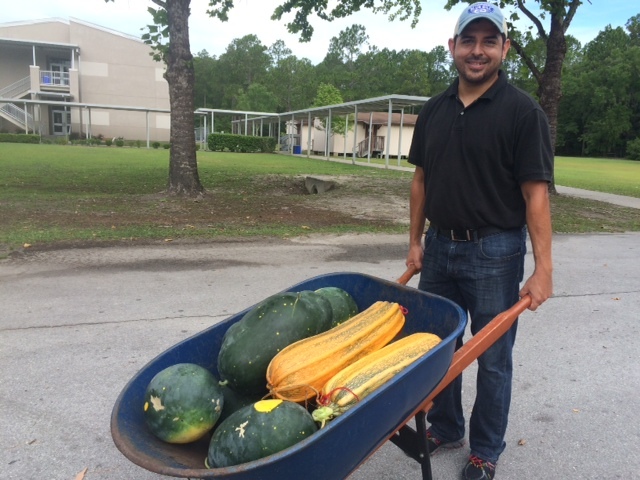We will have summer school through the month of June, and then we are DONE (well done) till classes begin again in the Fall. This week, students headed straight to the Grow Zone – aka field plot – to harvest crops before the heat settled in. It’s been close too 100 degrees several times during the last week.
The beautiful Moon and Stars watermelons are the reward for the hard work in the garden. This variety was thought to be extinct, but a Missouri farmer had saved the seeds – and we got some (thank you Forage!). The students carefully saved the seeds of these, too – for next year’s crop.

No, Daniel is not a gnome. These squash (next to the moon and stars watermelon) are HUGE – grown out for their seeds.
They are also saving the seeds from two other American heirlooms: the red-striped greasy bean, a nutrient-packed “soup bean” from Appalachia and the Hopi Red Dye amaranth from Arizona, a grain that has been cultivated in the Americas for thousands of years.
Growing these plants and saving the seeds, the students are learning about the cultures where they originated and the relationship between horticulture and human culture. They are part of the chain.
And we get to eat watermelon.



